#kaftan culture
Text
! DONT FORGET !
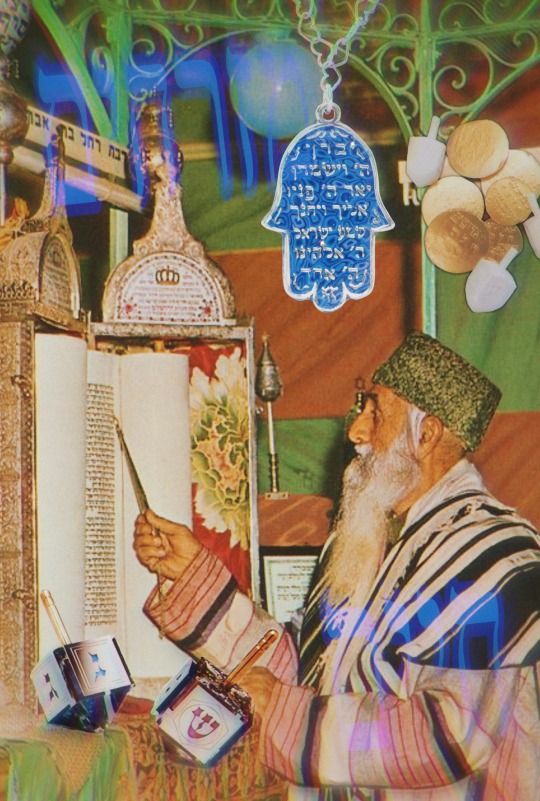
(Postcard of Mizrahi reading the Torah. Cant find much else)
Not all Jews are Ashkenazi so DONT TREAT US LIKE WE ARE!
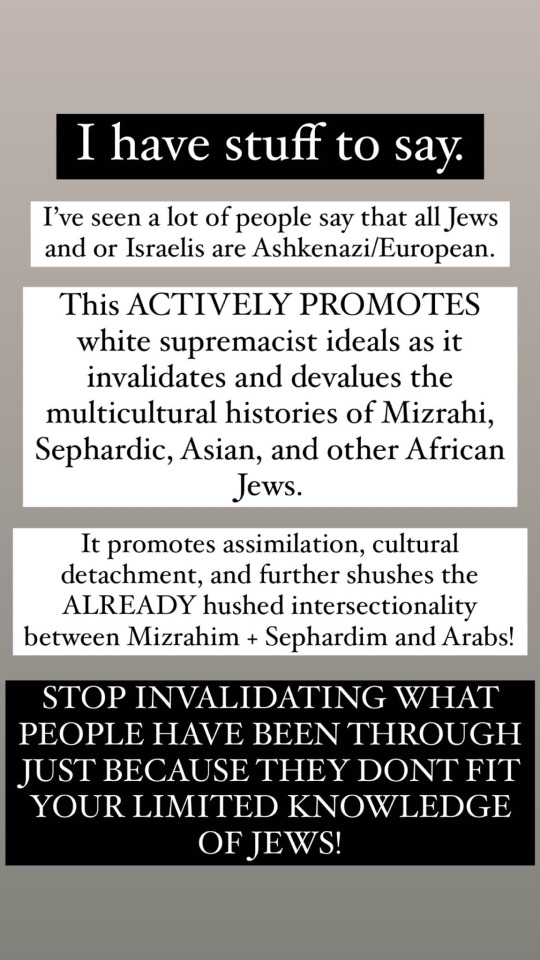

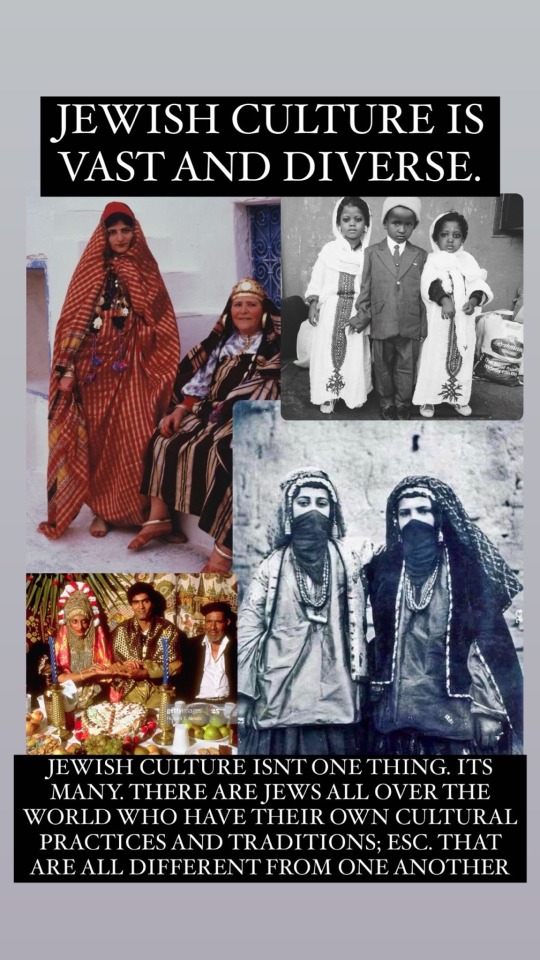
! DONT FORGET !
! WE ARE JEWISH TOO !
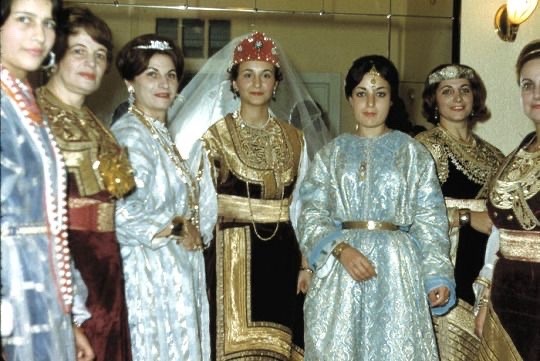
(Moroccan Jews at a henna party wearing Kaftans and Berberisca. The Berberisca dress; or ‘Keswa El Kbria’ is a Moroccan Jewish wedding dress.)
#jewish#jewish culture#mizrahi jews#mizrahim#mizrahi culture#arab jews#sephardic#sephardi jewish#sephardim#Sephardi culture#Berberisca#kaftan#arabic#hebrew#jews#jew stuff#queer jews#jews of color#morocco#moroccan jews#ethiopian jews#maghreb#jewish diaspora#diaspora#israel
31 notes
·
View notes
Note
reː this postː https://www.tumblr.com/anissapierce/694967947488362496/actually-they-wholesale-wouldnt-allow-sara?source=share THIS IS INSANE??? my name is sara without the h and my moroccan grandma gave it to me even though i was born in the U.S i did nottt know about this... to make matters more confusing she denies having amazigh heritage 😵💫 morocco is a mess
Like sara without an h* isn't like ... Well A Traditional Amazigh Name but when naming my sisters n i my parents wanted something Americans wouldn't make fun and would recognize how to say, wasnt super amazigh as to get denied outright, but still wasnt an out and out arab name.
Sara was close enough to Zahra even though the spelling and pronunciation was different so my dad thought it mightve eeked thru
* (or with an h but like ... There's no way to write tht in arabic? Iirc a romanization of the name gets decided along w the birth certificate bc this whole govt naming thing came abt after the french n iirc partially inspired by the french?its connected to the whole 'we need last names' thing when like not all tribes had naming systems like that n they wanted names they could write in arabic too iirc tht also got romanized into the french alphabet n spelling.
But idk apparently sarah is the way it was spelled in the torah (sources needed) and for sure the bible so maybe just the Closessness to a holy book thats not Quaran like didnt pass snuff n thts why the name Shall not pass but my dad swears its the connection to imazighen which like i believe him but its entire possible tht imazighen picked up from jewish populations ? Or possibly even before Judaism it was just a Name of the area but idk it feels like sth from the gulf tht got passed along either thru religion or trade which like ... Damn the Moroccan govt wasnt accepting that?
#your grandma likely wouldbe disputed it being a name tht imazighen had#the intermingling btwn imazighen n jewish populations from like Europe n east asia kinda make it difficult to parss#a lot of zeen as tried n true imazighen traditions n art have their roots in tht cultural exchange#*insert conspiracy theory abt the arab nationalist party in charge of the moroccan govt n how they sought to divide the two groups*#(but theres no dividing is the thing bc there were imazighen who Were jewish )#asks#kaftan
6 notes
·
View notes
Text
To get to the post office, we passed Harvey’s [bar], named in homage after Milk’s assassination (supposedly by a real estate developer who didn’t exactly concur with his politics). Before that, it was the Elephant Walk. Opening a couple of years after the Twin Peaks, it took a cue from its predecessor, foisting large picture windows onto the corner of 18th and Castro Streets. On Sundays in the late seventies, the disco diva Sylvester sang in falsetto there, wearing sequin kaftans. Most of the men in the audience were his opposite—more of the same clones. Sylvester’s biographer, Joshua Gamson, wrote that the clone culture ‘was about gender, and it was about fucking, but it was pretty much the opposite of gender-fucking.… Queens didn’t fit unless they covered up their nelliness with a mustache and packed it away in jeans.’ Yet somehow, Sylvester—black, androgynous, the antithesis of a regular guy, idiosyncratic, too much—relieved the clones of the fear of their own femininity. Sylvester was an icon of a neighborhood in which he was otherwise an outcast. He could have represented the fairy that each of those boys had the potential to be, or may have once been. Because he was larger than life, his sissiness so super, they weren’t actually at risk of becoming Sylvester—they couldn’t if they tried. I imagine the sparkles of Sylvester’s garments catching the light and dazzling the men’s stares, as if refracting their insecurities.
In 1978, Sylvester released ‘You Make Me Feel (Mighty Real).’ Realness was not only a drag term about passing as a woman, it simultaneously called into question what it is to be an authentic man. Sylvester’s feel is as vital as am; like the theorist Judith Butler’s chosen example of ‘(You Make Me Feel Like) A Natural Woman,’ I take the feel as positing our identities are both relational and in the aspiration. Until his death in 1988, Sylvester was a de facto ambassador within the Castro—not delivering cautious diplomacy between contentious factions, but providing a glimmer of the imagination, as if causing the street an otherworldly leak. Sylvester’s look was visionary, and I suspect had some trickle effect: in footage of a Castro street party from 1982, I’ve detected a few slippages in the clone monolith, my attention drawn to one boy plainly dressed but with a single feather earring.
Jeremy Atherton Lin, Gay Bar, 2021
134 notes
·
View notes
Note
Forgive me if this is a bad take but like. If one wanted to like. Do outfits based on where you're going. Why not just buy some when you get there? Like. Surely that's in budget for "go to a country across the world", gets you something more authentic, does the "supports the economy" thing people always claim tourism does (without exclusively supporting the tourism economy, in this case) and like. Isn't just broadcasting your preconceived notions.
I get what you're saying! I do think buying clothing in a specific place makes sense. though there are drawbacks to that plan for anyone who has really specific needs with regards to what clothing they wear.
I'd question what "authenticity" really is or means, though. the thing is that there are malls in Morocco (and a lot of other places) that sell clothing from major global brands. for better or for worse, the global export of "Western" fashion has impacted what people wear almost everywhere on Earth. you could buy blue jeans and a moto jacket from any random Zara in the US or Europe and you would look more "Moroccan" than someone chasing a made-up idea of "Moroccan"-ness, whether they're purchasing those clothes inside or outside of Morocco.
"authenticity" is a trap that destroys what it searches for. it can only ever chase after the ideal, the stagnant, the atavistic. if it cannot find what it searches for (because tourists and industry, in encroaching further into areas they deem "remote" to find the "untouched" and "authentic," by their own logic deplete the exhaustible resource of "authenticity" that they imagine exists), it creates it—there's a "race to the bottom" where anything familiar is deemed inauthentic (even if it "really" represents the lives of people in a certain location), and anything bizarre, odd, strange, or gross is deemed authentic (even if it really doesn't). people in "remote" villages in Africa straight-up invent fake weird rituals to satiate this desire amongst Western tourists and photographers. you see a similar pattern with food culture.
there's this idea that you travel to "explore," that there's something daring and intrepid about going specifically to certain locales, because you're encountering the unfamiliar and becoming "cultured" and learning more about different people. yet in order for this self-concept of "daring" and "intrepid" to hold, what you encounter must be sufficiently shocking. white / Western people will travel to a "third-world" country supposedly in order to expand or challenge their own expectations, and then get angry and complain whenever they don't find exactly what they already expected!
to return to the question at hand—you're going to be able to find kaftan and gndourat and djellabat and blaghi in the souaaq of any city, yes. whether these are "authentic" "Moroccan" garments is a more philosophical question, as many of these shops primarily cater to tourists and sell garments in a Moroccan style that have in fact been imported from China... and, because the shops stock what sells, and tourists buy what they like, and they like what they already expected to see, the shops are geared towards what Westerners associate with "Morocco"... meanwhile, many of the garments that e.g. Zara stocks in their European stores were in fact assembled in Morocco! so what constitutes an "authentic," "Moroccan" garment, exactly?
#to be clear I'm not implying that any of this is news to you#just following my train of thought#travel#authenticity#mine
90 notes
·
View notes
Text


Miss Grand Türkiye 2023 National Costume
"Ottoman-Turkish Henna Kaftan Dress" Women wear this traditional costume on special occasions such as weddings, henna nights and engagement ceremonies. Henna night, which is one of the most entertaining celebration nights of the bride, is very common especially in Turkish and Arab culture. The henna night, which is among the most well-known traditions of the marriage process, also offers a spiritual night between the bride and her family.
63 notes
·
View notes
Note
Hi! Edd AND Eddy 5, 12, 14, 25 :3
Thanks!! Sorry I wrote up an entire long answer and then uuuhhh my phone died 🤡 so let’s do this again!
5. What's the first song that comes to mind when you think about them?
Not necessarily the songs of all time but recently it’s been
Edd:
Eddy:
And hell why not shipping music:
12. What's a headcanon you have for this character?
Quickly, let me preface this section with the fact that I myself am white.
From the jump I’ve always thought Edd was not white, or mixed race, and had parents that were either first or second gen immigrants. And that it’s not very apparent in canon because his family assimilated really hard. I always felt this helped to explain a bit of his cultural sensitivities while at the same time adding some more depth to the intergenerational dynamics. Previously I’d imagined him as Filipino/white and more recently I’ve written him as mestizo/korean/white. I like seeing lots of other takes on this in the fandom throughout the years, like somewhat recently eddbedandeddy’s post that he could be MENA like his VA or gettingfrilly mentioning they see him as racially ambiguous. Recently the phrase “ancestral fruitcake” has been incessantly plaguing my mind (‘Tis the season/ is or is this not a hilarious stand in for the f-word slur please discuss among yourselves people) but that to me indicates that at least one line of his family is hwite.
Keeping on theme, I really cannot resist coding Eddy’s family as stereotypically dysfunctional Italian American (and let me elaborate on my opening statement by stating this identity IS my circus my monkeys 🙈). Memelzebub described his parents as Danny DeVito and Rhea Perlman in the movie Matilda and I agree hard on that!
14. Assign a fashion aesthetic to this character.
Okay I looooove playing dress up with these guys so let’s get into it. I envision these more as they get into their teens and older.
Edd: a bit of grandpa (chunky thrifted sweaters), casual 90’s/00’s streetwear (long sleeve quarter zips, sneakers), specialized outdoorsy gear (like 100 pocket cargo pants, swishy pull over rain jackets) and he’s always kinda cold (puffer vests, layers, etc) uhhh and he still wears outrageously colored and patterned socks. I like to imagine he’d expand his hat selection. He prefers to dress practically and comfortably.
Eddy: SO MUCH STYLE POTENTIAL. He likes fashion so I could see him playing up lots of styles and having lots of phases through his teens and into adulthood. Other than 70s inspired fashion, I’d be lying if I didn’t shout out butch lesbians as a fashion inspiration. In high school I often imagine him wearing more casual 00’s clothing - baggy jeans and long jorts and skater sneakers and polos and bowler shirts. And then as he gets older he leans into more “slutty 70s” men’s fashion. I think for loungewear he has a huge selection of dramatic robes and kaftans like some old Hollywood diva.
25. What was your first impression of this character? How about now?
Edd: idk this is classic but I had a crush on him as a kid. What can I say. Now I don’t have a crush on him but find him incredibly interesting and complex and fun to think about (: I think I always liked that he was a big nerd with sort of odd interests because I related to it. Now I relate most to his unmedicated anxiety 🙃
Eddy: also classic response, I found him grating and annoying during the original air time. But I didn’t flat out hate him or anything. I found his voice interesting and he was funny! Now I love love love Eddy. I only watched BPS in like 2013 and man did that really shift things for me in terms of being emotionally invested in this pink cube. What a guy!
9 notes
·
View notes
Text

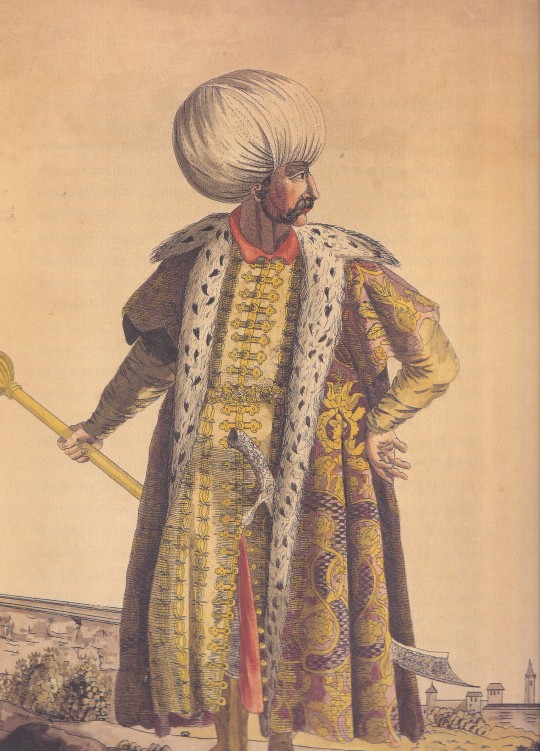


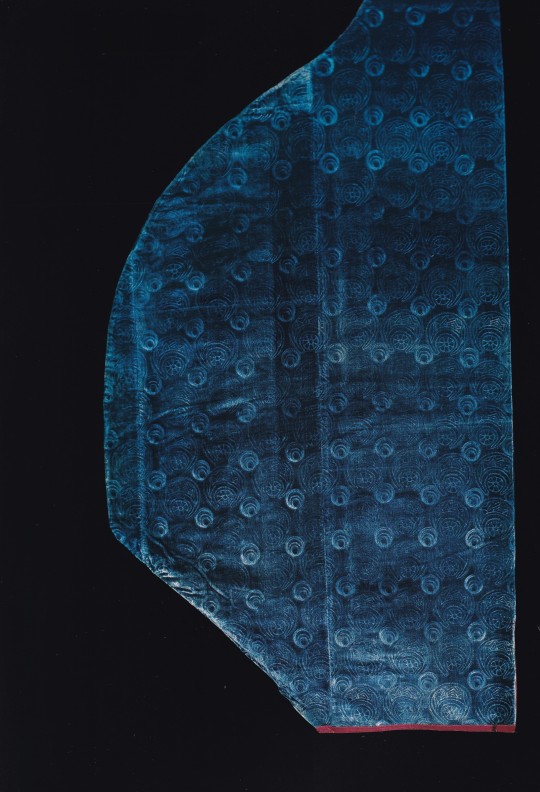


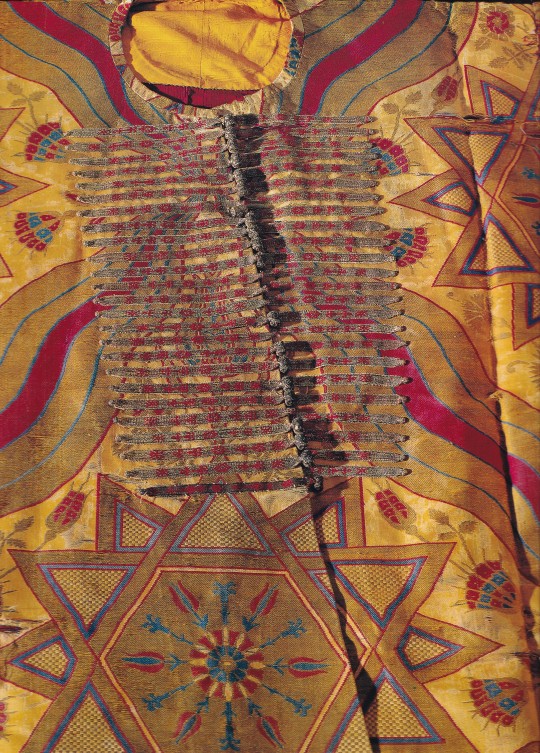

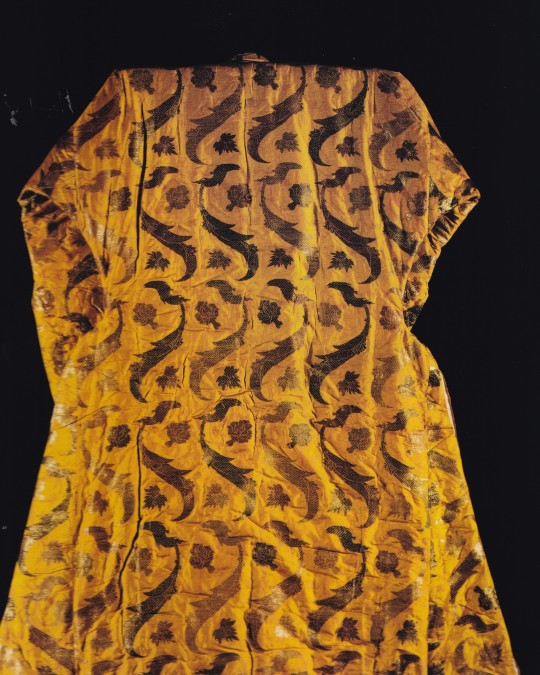


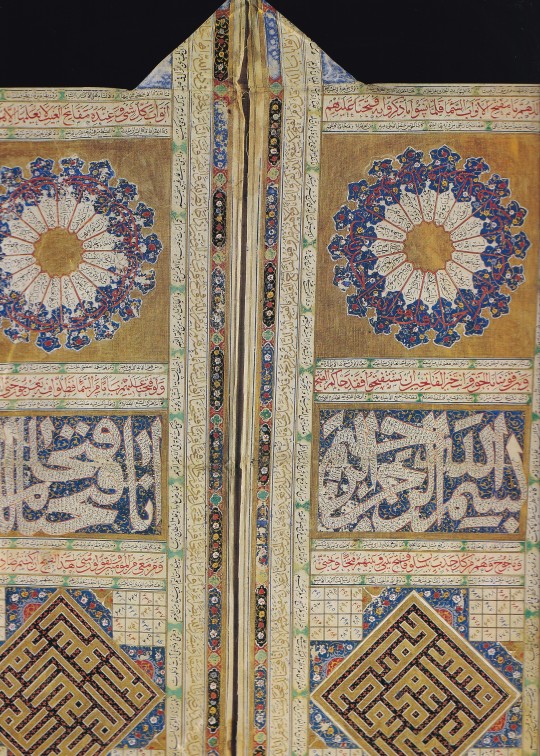
Silks for the Sultans
Ottoman Imperial garments from Topkapi Palace
Photos by Ahmet Ertuğ, Essay by Dr.Patrick L.Baker, Dr.Hülya Tezean, Jennifer Wearden
Ertuğ & Kocabıyık, 1996, 251 pages, 150 colour plates, 31x42cm,
euro 600,00
email if you want to buy [email protected]
This superb oversized book is published by Ertuğ & Kocabiyik Publications, a publishing house established by leading architect and photographer Ahmet Ertuğ and Ahmet Kocabiyik. Their books are unique collector's items focusing on the cultural heritage of Anatolia. The magnificent images by Ahmet Ertuğ are accompanied by articles of world-renowned academics to reflect the inherent value of the masterpieces they contain. The garments shown and described in this book were chosen from about five thousand objects in the garments and accessories collections of Topkapı Palace Museum in İstanbul. In making this selection, emphasis was placed on the silk kaftans (robes) that were worn by the sultans with an eye on such criteria as color, design, and quality reflecting the rich cosmopolitan atmosphere that prevailed in the Ottoman court. The examples in this book are classified according to design categories within which they are generally presented in chronological order. This has the advantage of reflecting the stylistic developments that took place in the design-shops attached to the Ottoman court. The first category consists of fabrics with the "triple spot" motif and its variations. The second group presents two examples of garments in the "saz" style and in the third, of the "Floral style". These are followed by kaftans in "Seraser" fabrics. The next three groups are devoted to fabrics that are of European origin or were imported from India. The next two categories show items of dress made from plain fabrics, some with appliqué designs, other garments from the 18th and 19th centuries. The last group are not kaftans but talismanic shirts, included because the unusual calligraphic treatment of their designs provides an interesting coda to the magnificent and elegant garments that precede them.
24/01/24
10 notes
·
View notes
Note
popping into people's asks this morning!
do you already have a fancy dress for your upcoming birthday party?!
I... have finally ordered the FABRIC (a silver-grey rayon velvet) for the dress for my birthday party. 😂. I dithered for a while because I couldn't make up my mind how many yards to get, haha. It's a fairly simple construction, though, so it shouldn't take too long (she says. 😅). The nice thing about it being a fantasy culture is that I can pretty much make it look however I want. So, I'm borrowing design elements/construction techniques from a variety of different ancient or traditional garments that mostly involve draping large pieces of fabric, haha! So the design is part Greek chiton, part kaftan, part Medieval European surcote... It's actually from a design I drew about 20 years ago for an illustration of Arwen, based on Tolkien's description of her at Elrond's feast in the Fellowship of the Ring. (I am being super insufferable and pedantic and insisting that the aesthetics of this party are based solely on the BOOK descriptions and not the movies. 😆. I love the movies! But their interpretation is only one of many possible interpretations and I have my OWN ideas about what things looked like, haha) The only part I probably won't be able to pull off is the belt of silver leaves. 😔 I made one in college and it was super pretty, but the only medium I had access to was silvertone "embossing metal," which is basically very heavy aluminum foil... So the belt was sadly very fragile and had to be thrown out years ago. I have definite ideas about how I would do it all over again, but sadly neither the time nor the funds to pull it off. 😆 Ah, well!
But I CAN use the cloak I made years ago (the old gown doesn't fit me anymore)! It's a dusky silvery lavender velvet, the color of a purple twilight sky (a similar color to Arwen's cloak in the movies), lined with a silvery faux silk, and has a voluminous hood. It was one of the first things I ever sewed by myself, and I remember cutting it out on the floor of the house I grew up in and asking my neighbor across the street to teach me how to use their sewing machine. 🥺 Aw! I'm feeling emotional about it now! 😂
#Sewing#Costuming#A long expected party#<- I think that's going to be my tag for this. Haha!#Rayon velvet is about half the price of silk velvet (and even silk velvet is usually mostly rayon now anyway) but still not super cheap#But I really wanted something better than polyester stretch velvet this time haha#My old cloak is definitely polyester stretch velvet! And it's still really pretty!#But... I was longing for the good stuff this time#Hence the dithering over yardage 'Can I get away with only 3 yards? No? Sigh. Fine.' I'm glad PayPal lets you split up payments now though!
11 notes
·
View notes
Text
What is an Achillean Femme?
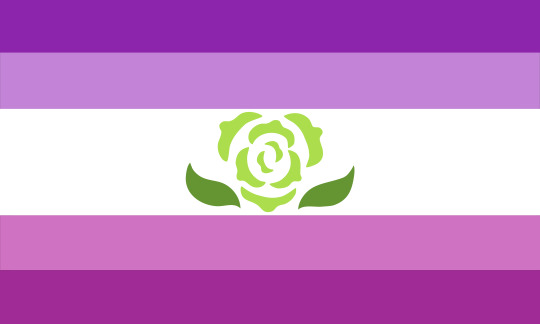
I am a queer person, I have been for as long as I can remember. As a young boychild, I was very feminine. I loved pretending to be Dorothy from the Wizard of Oz (very on-the-nose) and lip-syncing to Britney Spears songs with my sister. As an adolescent, I came to describe myself as gay, and through YouTube and Tumblr, came to better understand my gayness. Around 18, I began identifying as non-binary. Now at age 26, I have coined (as far as I can tell) a new term for my queerness that descibes both my sexuality and my gender identity: achillean femme.
The LGBTQIA+ wiki page for achillean says that “achillean refers to a man or man-aligned individual who is attracted to other men and man-aligned people''. The same wiki’s page on the term femme says that “femme.. often refers to a person of queer gender expression [or identity] that embraces, reclaims, or subverts their culture's understanding of what it means to be feminine.” I think that the term is pretty self-explanatory once you understand the terms that comprise it. An achillean femme is an achillean person, meaning a man or someone who identifies within the realm of manhood, who is a femme or describes themselves as feminine.
I love the term achillean because it makes sense to folks who have been apart of the gay male or man-loving-man community and spaces for any amount of time. Achilleans who are 60, 70, 80 years old know “gay men” who are feminine and flamboyant who barely align with any societal definition of manhood yet are lumped in as gay men. They also known bisexual men in the community who have called themselves gay for decades, eventhough they’ve always been attracted to, and been with, folks of other genders. Millenial and Gen Z achilleans are more and more describing themselves as non-binary and not aligning themselves with the terms “gay man” or “gay male” because they do not see themselves as cisgender men, even as they still identify within the realm of gay manhood. I believe that many of these folks would feel much more comfortable using a term like achillean that allows them linguistic space within the MLM community without confining them to strict identification as monosexual and/or cisgender men.
The term femme has taken me longer to come around to using. I love the term femme, but trans-exclusionary discourse in online feminist spaces for a long time gatekept me out of using the term to describe myself. I feared that cis lesbians and cis sapphic women would dogpile on me online and try and dox me for being a person assigned male at birth who describes themselves as a femme. It has lesbians and sapphics on twitter and tumblr, many of whom are non-binary and trans themselves, who helped me overcome this fear and embrace my femmeness. No two femmes are the same, there are as many experiences of femininity as there are feminine people, but what unites us is a common understanding of our devaluation under patriarchy and the experience of empowerment that we feel when we live authentically into our feminine inner-light. My femmeness is energetic, funny, and contagious. When I am being my femme, fairy self, people enjoy being around me. Living out my authentic feminine soul, allows others to do the same. That makes me happy.
So who are achillean femmes? Achillean femmes are fat non-binary bearded ladies like myself. Achillean femmes are magical fairy gays who strut into a gay club in a jock strap, butterfly wings, platform heals, and a tiara. Achillean femmes are drag queens of many stripes. Achillean femmes are the queeny old gays at brunch in a kaftan, sharing gossip, drinking mimosas. Achillean femmes are the trans fags who are often excluded from predominantly cis gay male settings and continue to fuck with gender anyways. Achillean femmes are anyone and everyone who feels at home in a gay club and a tea party. Achillean femmes are cis men, trans men, non-binary AMAB and AFAB people, intersex folks, and genderqueers. If you love your femininity, however you define it, and you love guys, dudes, bros, lumberjacks, bears, muscle daddies, hunks, and twinks then you are probably an achillean femme. If you are none of these things but the term feels right to you then join me, let’s be fags together! Let’s be achillean femmes!
----------------------
Flag Design: Flag uses the achillean flag design (created by Trumblr user pridenpositivity in 2016) as a base and then pulls colors from the femme flag design (created in 2017 and posted by the noodle tumblr blog). The final design is mine and was created and posted by tumblr user achilleanfemme on December 12, 2022.
#achillean#femme#achillean femme#queer#gay#gay male#gay pride#queer pride#lgbt#lgbtq#lgbt pride#lgbtq pride#lgbt flags#gay flag#pride flag
31 notes
·
View notes
Text
Top 10 African Inspired Fashion Trends – The Afropolitan Effect
Western fashion has often looked to African and African-American culture for inspiration but this time around the world seems to want an official romance with it. Here’s what you should know about when the affair started and how Afropolitans are changing the narrative.
Western designers have been flirting with African symbols, patterns and fibers since as far back as the 1970s when Yves Saint Laurent created a fashion collection that evoked images of an exotic Africa for non-African audiences. These collections were based on what Western designers imagined Africa to be as opposed to what it really was.
As expected, this cultural appropriation, which was not benefitting African designers or textile weavers in any way created an uproar because it was a one-sided affair and was not mutually beneficial. Africa was the glamorous mistress whom Western designers wanted to profit from but not empower. The resistance also came because no one can tell Africans how to be authentically African. Despite the deep cultural similarities, the countries in the continent share different political climates, geographic realities, languages and weather. Meaning that there is no one single narrative of African reality.
These diverse experiences of Africans gave rise to the term Afropolitan. Afropolitans are young Africans with a global outlook, upwardly mobile, culturally savvy, changing the perceptions about Africa through creative expression and redefining what it means to be African in the midst of a multitude of subcultures. To be Afropolitan means we understand that the world is a global village (heck, we are products of that globalization), and that design inspiration can come from anywhere. However, if the fashion world borrows from Africa we ask for recognition, inclusion and empowerment of African designers and retail brands that have worked hard to keep evolving African style, giving it new currency and new associations.
With this understanding, let’s take a look at the top 10 Afro-inspired trends for women that have found their way to the retail fashion streets.
#1 - Matching Couple Outfits
Matching or uniform outfits are the status quo for African couples and family members at special occasions such as weddings and birthdays. Fabric is bought in bulk and made into different glamorous attires by family and friends for an event, to serve as a form of identification, solidarity and love. The world has taken a leaf from this culture by updating pre-wedding photo shoots from matching T-shirts to full matching outfits for couples. on the other hand in winter outfit like boss jacket is the perfect one with the T-shirt for the couple.

#2 - Afro-Pop Culture T-Shirts
Just like African-Americans made hip-hop a dress code, the custom T-shirt era has ushered a longing for expression of different African realities especially by urban African youths. Using personal motifs like hair-do, music and food in bold and unusual ways is now the new cool.

#3 - Boubous & Kaftans
Loose fitting garments worn by African men and women called Boubous or Kaftans have become a wardrobe staple all over the world.

#4 – Tie & Dye
Cultures across the African continent have various tie and dye techniques and motifs signifying varying ideas. Today, these colorful tie-dye prints are a must-have for women all over the world.
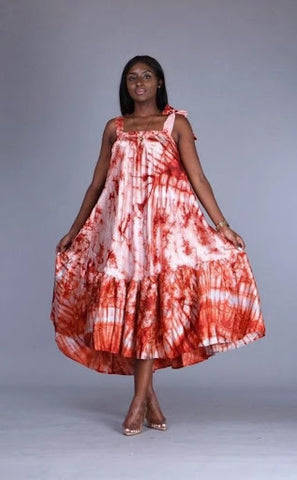
#5 - Fringe Love
Traditional African fabrics like Kente. Akwete, Asooke are woven using different types of threads. The ends of the threads are left to hang out as decorative elements at the base and sleeve of garments. The African fringe has a western cousin but the fringe love is universal.
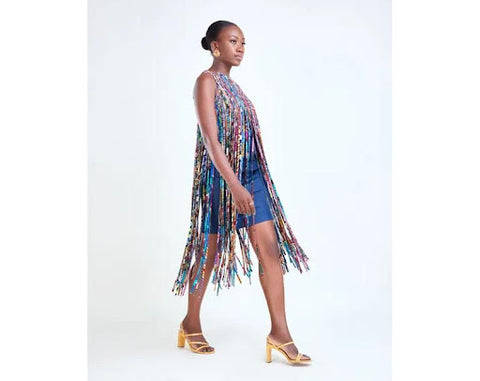
#6 - Head Wraps
African head wraps are made from local fabric or Ankara prints and tied round the head in an intricate style. The trendy head wraps of today are sewn together as ready-made fashion accessories..

#7 - Wooden Jewelry
Jewelry made from utilitarian products like wood have their inspiration from African sculpting and carvings.

#8 - Neck Rings
African neck rings were worn by the South Ndebele of South Africa as part of their traditional dress and as a status symbol for the wearer. Today, statement gold chokers shaped like rings are a hot fashion trend.
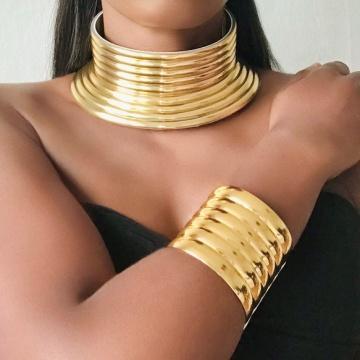
#9 - Ankara Print
Though it is said that these prints were brought to Africa by Dutch textile manufacturers, it is the stylish use of these materials by Africans that popularized the fabric. It was Africans who requested for specific patterns to be printed and it was Africans who helped it evolve and popularized it; we made it ours.

#10 - Head to Toe Monochrome/Matching Sets
Going head-to-toe in one color or pattern is a fashion trend that has its roots in African fashion. Yards of fabric are given to tailors to make matching tops and bottoms for both men and women as day wear and occasion wear. The world has caught this monochrome bug.
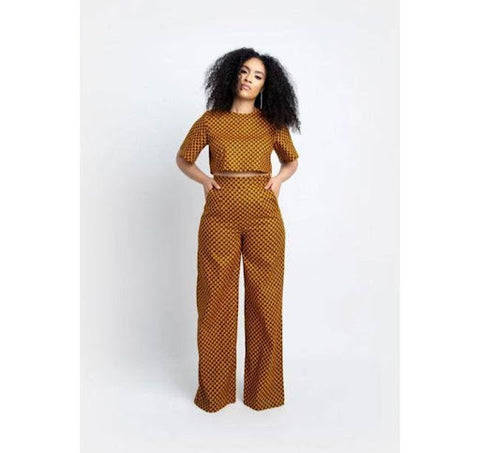
The rise of the Afropolitan class means that there is a hunger for truly meaningful clothing that helps Africans in Diaspora connect with their roots. How can you play your part? Seek out small independent designers and/or brands and patronize them because by doing this you are strengthening the systems and supporting designers both in Africa and in the Diaspora. Looking for where to shop authentic African designs with global spice? Check out Joe Stylee. Do you know other authentic African brands? Please share in the comments.
23 notes
·
View notes
Photo


Sharon Tate photographed by Alan Pappe at her Beverly Hills home in 1968
Sharon is wearing a kaftan by Thea Porter, part of the revolution of young people introducing the world to foreign cultures & ideas in the 60s
#sharon tate#alan pappe#summit ridge drive#los angeles#cultural revolution#natural beauty#iconic images#1968
111 notes
·
View notes
Text

US Vogue November 15, 1967 💛💛💛💛💛
The solid gold kaftan, enough sparkle to strike all the right sparkles - a jewel - shimmering gold silk gauze floating over a gold silk jumpsuit. By Tina Leser. Gripoix rings. Glittery gold sandals by Bernardo. Sunny background: the Costa Smeralda of Sardinia.
Le caftan en or massif, assez d'éclat pour frapper toutes les étincelles de droite - un bijou - une gaze de soie dorée scintillante flottant sur une combinaison de soie dorée. Par Tina Leser. Bagues Gripoix. Sandales dorées et scintillantes par Bernardo. Fond ensoleillé : la Costa Smeralda de la Sardaigne.
Model/Modèle Marisa Berenson
Photo Henry Clarke
Coiffure Alexandre de Paris
vogue archive
#us vogue#november 1967#swinging sixties#fashion 60s#american style#tina leser#gripoix#bernardo shoes#marisa berenson#henry clarke#fall/winter#automne/hiver#alexandre de paris#costa smeralda#sardinia#sardaigne#calfan
17 notes
·
View notes
Text
Sorry?? How could they fuck up Tyesha and Aamir's wedding like that?
Why is Tyesha being expected to dress according to desi culture, the scene where people are putting her henna on and Aamir's just like where's my shoes? Where's the love?
Compare it to this:
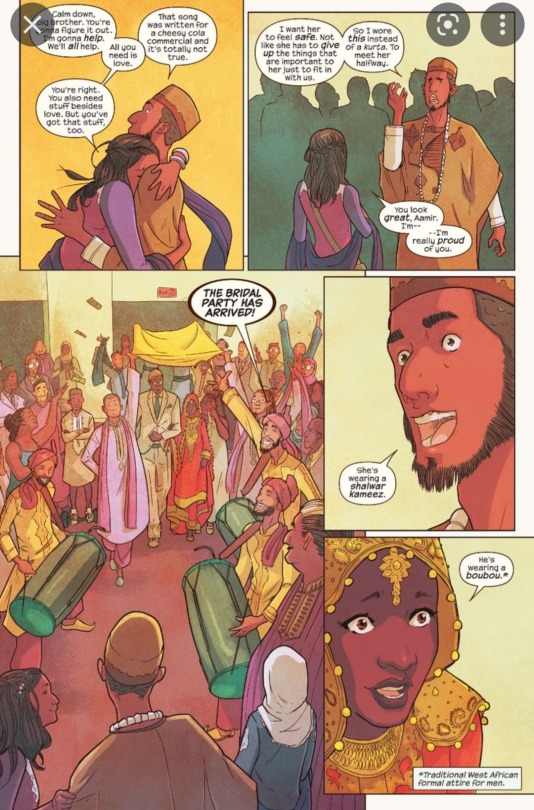
Do you see? The exchange of cultures? The surprise on their faces? No expectation, two people choosing each other, choosing to appreciate the other's culture and background.
Meanwhile mcu Aamir dancing in his shalwar kameez in a bollywood style dance sequence, like sorry but comic Aamir would never, music is haram you know, shaytaan shaytaan!
Also Nakia wearing it too, i think it would be beautiful if she wore a kaftan i think celebrating other cultures is beautiful. Also she was dancing too and again comic Nakia would never.
Another thing is the complete lack of discussion on anti-black racism. In the show it's Aamir's wedding basically, Tyesha is there as a background character. But in the comic they actually discuss the anti-black racism that's rampant in a lot of non-black muslim communities.

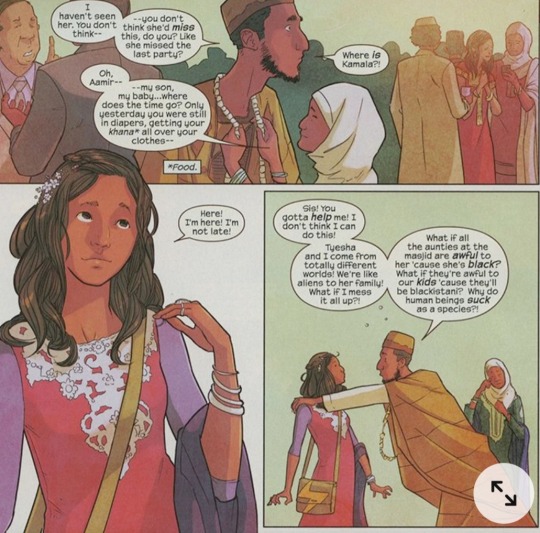
Like Aamir basically has to fight for Tyesha and he's so worried that his family and community won't accept her. (Also the fair and lovely line is so based)
Also like look at what Tyesha is wearing, no make up, no turban, fully covered in a jilbab/chador. Of course that was too much for the mcu no no she needs to show more skin. Clearly desperate for the appproval of white palates.
Also look at this:

In the show right, you literally dont see her parents which is such a fucking shame. Theyre not characters, theyre just there to clap along. Look here though, they've got their own culture and they're struggling with Tyesha seemingly breaking away from that.
Also Tyesha's brother (unnamed) in the show is a lot younger and wears a thobe in one scene and a shalwar kameez in another. Lmao you wouldn't catch Gabriel dead in one of those. The Hillman's have two kids veering off in very different directions and it just feels so real and normal.
In the end the two families reconcile and Mr. Hillman says: long live the Hillman-Khans and isn't that beautiful. Literally where was any of this.
To end I just want to show this scene from the comics of Tyesha and Nakia debating the meaning of hijab which we will never get in the mcu bc the mcu sucks and can't show anything other than a turban with makeup and is about as deep as a puddle.

#sorry but ms marvel was literally groundbreaking for muslim rep#and mcu decided to pave it over#ms marvel#mcu critical#mcu#literally go read the comics#racism#feel free to correct me on any terminology
34 notes
·
View notes
Text
Black Contribution to Fashion and Wardrobe in the West: Past, Present and Future
How We Arrived | A Brief Recount with Many Threads
Fashion is a form of communication that reflects the identity, culture and values of individuals and groups. Fashion is also influenced by the social, political and economic contexts of different times and places. Throughout history, Black people have contributed to fashion and wardrobe in the West in various ways, from creating original styles and trends to challenging stereotypes and discrimination. In this article, we will explore some of the aspects of Black contribution to fashion and wardrobe in the West, and how they might shape the future of fashion.

The Origins of Black Fashion
Black fashion has its roots in the diverse cultures and traditions of Africa, where clothing was not only a functional necessity, but also a symbolic expression of status, religion, ethnicity and aesthetics. African textiles, such as kente, adire, bogolan and shweshwe, were made with intricate techniques and patterns, and often dyed with natural colors from plants and minerals. African clothing, such as dashikis, kaftans, boubous and agbadas, were designed to fit the climate and the lifestyle of the people, and often embellished with beads, shells, feathers and metalwork. African fashion also reflected the influence of other cultures, such as Arab, European and Asian, through trade, migration and colonization.
The Impact of Slavery and Colonialism
The transatlantic slave trade and the colonization of Africa by European powers had a profound impact on the fashion and wardrobe of Black people in the West. Enslaved Africans were stripped of their cultural identity and forced to wear the clothing of their oppressors, which was often cheap, coarse and ill-fitting. However, enslaved Africans also resisted and adapted to their situation by modifying, embellishing and personalizing their clothing, using scraps of fabric, buttons, ribbons and jewelry. They also preserved and transmitted some of their cultural heritage through their clothing, such as headwraps, turbans, bandanas and scarves, which were worn for protection, modesty and dignity. Some enslaved Africans also managed to acquire or make finer clothing, especially for special occasions, such as weddings, funerals and holidays, which allowed them to express their individuality, creativity and pride.
The Rise of Black Fashion Movements
The abolition of slavery and the civil rights movement in the 19th and 20th centuries gave rise to various Black fashion movements that challenged the dominant norms and standards of beauty, and celebrated the diversity and richness of Black culture. Some of the examples of these movements are:
The Harlem Renaissance: A cultural and artistic movement that emerged in the 1920s and 1930s in Harlem, New York, where Black artists, writers, musicians and intellectuals created a vibrant and influential scene that showcased their talents and achievements. The Harlem Renaissance also influenced fashion, as Black people adopted and adapted the styles of the Jazz Age, such as flapper dresses, zoot suits, fedoras and pearls, and added their own flair and elegance. Some of the icons of this movement were Josephine Baker, Billie Holiday, Langston Hughes and Zora Neale Hurston.
The Black Power Movement: A political and social movement that emerged in the 1960s and 1970s in the United States, where Black people demanded their rights, freedom and justice, and asserted their identity, dignity and self-determination. The Black Power Movement also influenced fashion, as Black people embraced and reclaimed their African roots, and expressed their solidarity and resistance. Some of the styles of this movement were Afros, cornrows, braids, dashikis, leather jackets, berets and sunglasses. Some of the icons of this movement were Malcolm X, Angela Davis, Huey P. Newton and Kathleen Cleaver.
The Hip Hop Movement: A cultural and artistic movement that emerged in the 1970s and 1980s in the Bronx, New York, where Black and Latino youth created a new form of music, dance, art and fashion that reflected their realities, experiences and aspirations. The Hip Hop Movement also influenced fashion, as Black and Latino youth innovated and experimented with different styles, such as baggy jeans, sneakers, tracksuits, baseball caps, gold chains and graffiti. Some of the icons of this movement were Grandmaster Flash, Run-DMC, LL Cool J and Salt-N-Pepa.

The Influence of Black Fashion on the Mainstream
Black fashion has not only been a source of inspiration and empowerment for Black people, but also a source of influence and appropriation for the mainstream fashion industry and culture. Black fashion has often been copied, imitated and commodified by white designers, celebrities and consumers, who have profited from the creativity and originality of Black people, without giving them proper credit, recognition or compensation. Some of the examples of this phenomenon are:
The minstrel shows: A form of entertainment that originated in the 19th century in the United States, where white performers wore blackface and exaggerated costumes to mock and stereotype Black people and their culture. The minstrel shows also influenced fashion, as white people adopted and adapted some of the clothing and accessories of Black people, such as hoop skirts, bandanas, gloves and canes, and used them for amusement and mockery.
The orientalism: A form of representation that originated in the 19th and 20th centuries in Europe and the United States, where white artists, writers and scholars depicted and distorted the cultures and peoples of Asia, Africa and the Middle East as exotic, mysterious and inferior. Orientalism also influenced fashion, as white designers, celebrities and consumers adopted and adapted some of the clothing and accessories of these regions, such as turbans, kaftans, kimonos and harem pants, and used them for fantasy and fetishism.
The cultural appropriation: A form of exploitation that occurs in the contemporary globalized world, where white designers, celebrities and consumers adopt and adapt some of the clothing and accessories of marginalized and oppressed cultures, such as Native American headdresses, Indian bindis, African prints and dreadlocks, and use them for fashion and fun, without respecting or understanding their meanings and histories.

The Future of Black Fashion
Black fashion has a long and rich history that reflects the struggles and achievements of Black people in the West and beyond. Black fashion also has a bright and promising future that offers new possibilities and opportunities for Black people to express their identity, culture and values. Some of the trends and developments that might shape the future of Black fashion are:
The Afrofuturism: A form of imagination that envisions the future of Black people and their culture in relation to science, technology and innovation. Afrofuturism also influences fashion, as Black people create and wear clothing and accessories that combine elements of their African heritage and their futuristic aspirations. Some of the examples of this trend are the movie Black Panther, the singer Janelle Monáe and the designer Mowalola Ogunlesi.
The sustainability: A form of awareness that recognizes the environmental and social impacts of the fashion industry and its practices. Sustainability also influences fashion, as Black people create and wear clothing and accessories that are made with ethical, organic and recycled materials, and that support local, fair and diverse production. Some of the examples of this trend are the brand Lemlem, the model Adwoa Aboah and the activist Dominique Drakeford.
The diversity: A form of inclusion that celebrates and respects the differences and similarities among Black people and their culture. Diversity also influences fashion, as Black people create and wear clothing and accessories that reflect their various identities, such as gender, sexuality, class, religion and disability. Some of the examples of this trend are the magazine CRWN, the actor Billy Porter and the designer Sinéad Burke.
Black fashion is a powerful and dynamic phenomenon that has contributed to fashion and wardrobe in the West in many ways. Black fashion is also a potential and transformative phenomenon that can contribute to fashion and wardrobe in the West in many more ways. Black fashion is not only a form of communication, but also a form of expression, resistance and liberation.
Amid a period when history classes might opt to reinterpret the Black influence, fashion schools are progressively integrating Black fashion history into their curricula, all credited to the efforts of committed educators. These educators employ diverse methodologies—lectures, discussions, and practical projects—to impart the narrative of Black fashion history. Additionally, they actively strive to broaden the spectrum of Black fashion designers and styles presented within the classroom setting.
Here are some of the experts, educators and advocates for continued education in the evolutionary process of Black Fashion:
- Dr. Jonathan Square, assistant professor of Black Visual Culture at Parsons School of Design and founder of Fashioning the Self in Slavery and Freedom, who teaches courses on Black beauty culture and Black fashion history, and organizes events and exhibitions on these topics
- Dr. Tanisha C. Ford, associate professor of Africana Studies and History at the University of Delaware and author of Liberated Threads: Black Women, Style, and the Global Politics of Soul, who explores the connections between fashion, activism and social movements, and co-curated the exhibition Black Girlhood and the Power of Belonging at the Delaware Art Museum.
- Dr. Monica L. Miller, associate professor of English and Africana Studies at Barnard College and author of Slaves to Fashion: Black Dandyism and the Styling of Black Diasporic Identity, who examines the role of fashion in shaping Black identity and culture, and co-edited the book Black Dandyism: A Reader.
- Elizabeth Way, associate curator of costume at The Museum at FIT and co-curator of the exhibition Black Fashion Designers, who researches and showcases the work of Black fashion designers from different eras and regions, and organizes public programs and publications on Black fashion history.
*see also The Experts Bringing Black Fashion History to Fashion Education: https://fashionista.com/2023/10/experts-teaching-black-fashion-history by Fashionista:

Empowering Movements in Black Fashion
The unique expression and activism within Black culture persistently shape fashion's diversity and interconnectedness. This influence resonates through the multicultural fabric of humanity, impacting even mainstream trends, notwithstanding past challenges of appropriation and insufficient acknowledgment.
Discover the world of Black fashion and become an active participant in its vibrant tapestry! Here are actionable steps to engage with and support Black fashion:
Attend Exhibitions: Showcasing Black designers and movements.
Support Black-Owned Businesses: Empower Black entrepreneurship by consciously choosing to support Black-owned fashion brands.
Educate Yourself: Explore the rich history of Black fashion, discover how these contributions have effected your style.
Black fashion is a global style panorama. Thank you for reading, comment, like and follow.
1 note
·
View note
Text
Chedda of Tlemcen

A traditional Algerian dress, more precisely of the city of Tlemcen, but also worn in the west of the country. The chedda consists of a traditional kaftan of velvet and gold thread, decorated with cultured pearls, and necklaces that fall from the temples. Huge earrings hang from a conical cap embroidered with gold thread and placed on the head. The conical cap is knotted with a scarf with seven to nine diadems.
9 notes
·
View notes
Note
hi, i've seen some ppl saying that TGT isn't good slavic representation. would you mind sharing your thoughts on it?
Ahahahaha!
It's no Slavic representation.
Names are completely butchered.
There is Tsar instead of a King. Ocasionally.
There are serfs, drunks, banya, troika, kaftans keftas, Gregs and muggles in Verb, Простите, я не понимаю по-русски! И я не хочу учиться....
It's more than obvious the author used some attractive set pieces, did zero research and called it a day.
I’m just glad she “used” Russian culture, instead of mine (Czech), because this way I don’t know names of linguists spinning in their graves.
#reply#Grishaverse#Grisha trilogy#Leigh Bardugo#grishanalyticritical#anti Leigh Bardugo#Grishaverse through the eyes of Slavs#Google translate can help with those two sentences.
33 notes
·
View notes